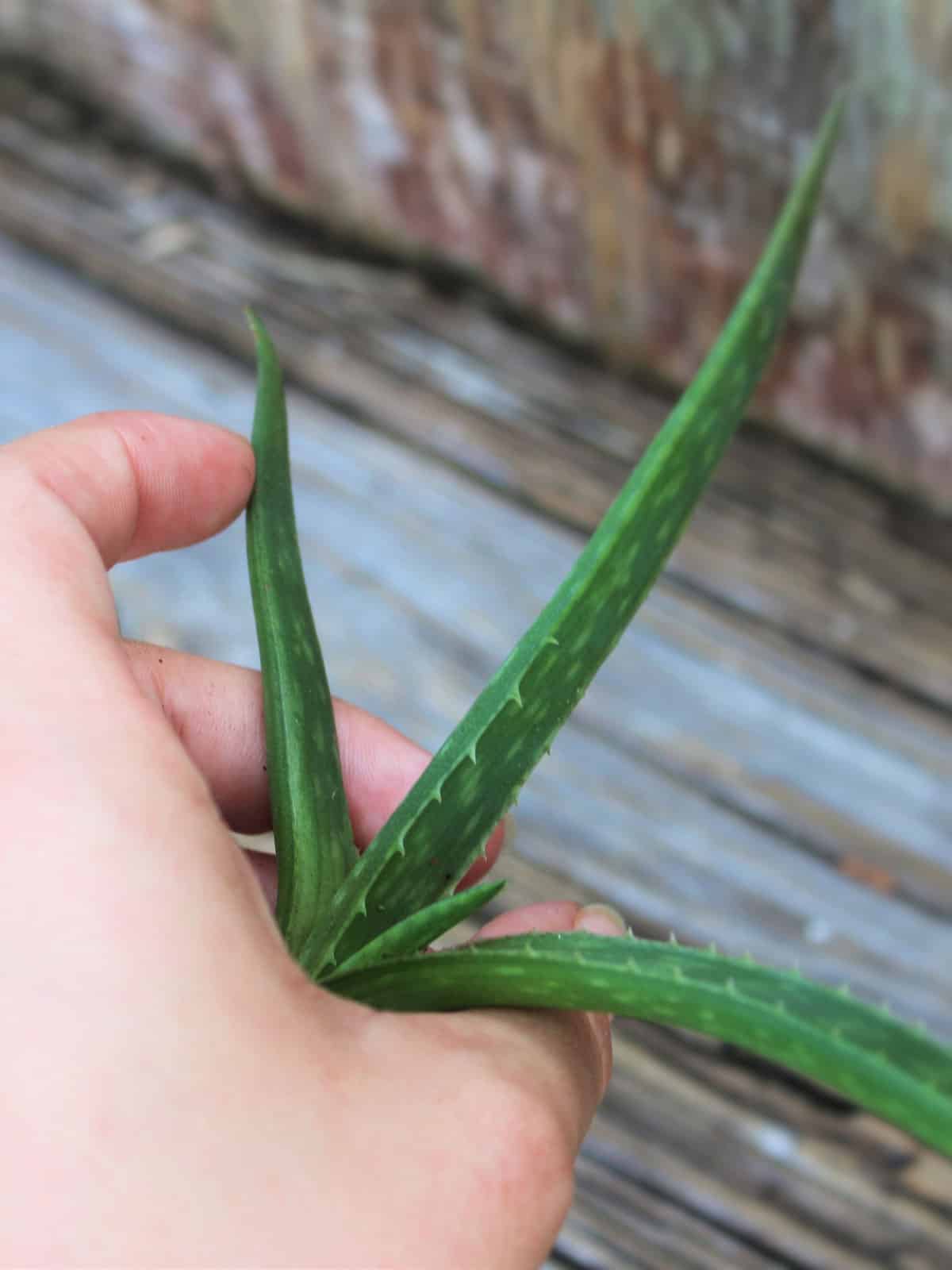Aloe vera plants, with their lush green spikes, are attractive and renowned for their soothing gel. As a beginner, nurturing these succulents might seem daunting, but rest assured, they're quite hardy and forgiving!

Proper pruning promotes health, keeps plants manageable, and can even help propagate new aloe offspring to expand your green collection or share with friends.
Understanding when and how to prune aloe vera is essential, as it differs slightly from other houseplants. So, grab your plant shears, and let's get your aloe looking its best!
Understanding the Pruning Process

Before you start snipping and trimming your Aloe Vera, let's clearly understand why and when it's best to prune.
Importance of Pruning
Pruning your Aloe Vera isn't just about keeping it aesthetically pleasing. It's vital for its health and vitality. Removing old leaves from the plant prevents disease and allows for better air circulation.
Likewise, eliminating damaged or diseased leaves stops potential infections from spreading, promoting a robust and flourishing plant.
Best Times for Pruning
Timing is everything when it comes to pruning. Since Aloe Vera is a succulent, it's best to prune during the spring or early summer.
These seasons offer optimal growing conditions, which help the plant recover and thrive after pruning. Always use clean, sharp tools to ensure a clean cut and reduce stress on your plant.
Learn more about your aloe vera's growing requirements by reading this post.
Tools and Preparation for Pruning
Before giving your aloe vera a little trim, ensure you've got all your tools lined up. You'll need the following:
- Aluminum Foil or Beeswax Wrap
- Pruning Shears or Sharp Knife
- Airtight Container
- Gardening Gloves
Step-By-Step Guide to Pruning Aloe Vera
Pruning your aloe vera is essential for maintaining its health and promoting new growth. Here's how to ensure your aloe vera remains thriving and well-groomed.
Step 1: Selecting the Appropriate Leaf for Pruning
The first step in pruning is choosing the right leaf. Target older, lower leaves showing signs of drying or browning. Pruning these leaves stimulates your plant and encourages new growth.
Step 2: Preparing for the Cut
Gather your pruning tools—a clean, sharp knife or a pruner. Sterilize your tools to prevent transmitting diseases to your aloe plant.
Wearing gloves is also advisable to keep your hands free from the sticky aloe vera gel and safe from any accidental cuts.
Step 3: Making the Cut
Perform a clean, angled cut near the leaf's base. Ensure a small part of the leaf remains on the plant to minimize the size of the wound and aid in quicker healing.
Step 4: Post-Pruning Care
Immediately after pruning, cover the cut areas on your aloe plant with beeswax wrap or aluminum foil. This protects the plant from infections and promotes healthy recovery.
Step 5: Handling the Pruned Leaf
Decide if you will store the leaf for its beneficial gel or dispose of it.
If you choose to keep it, place the leaf in an airtight container for later use in skincare or first aid. Dispose of unwanted leaves responsibly.
Step 6: Cleaning and Maintenance
After pruning, clean your tools again to remove any plant sap, ensuring they're ready for their next use. Check around your plant for any leftover debris and tidy the area to keep pests at bay.
Important Tips on After Pruning Care
Caring for your aloe vera plant doesn't end after you've snipped away the old leaves. Here's how to ensure your plant thrives post-pruning:
- Be Gentle: Your aloe vera is a bit vulnerable after pruning. Handle it with extra care to avoid stressing the plant.
- Sunlight Matters: Place your aloe vera where it can bask in bright, indirect sunlight while it recovers.
- Watering Wisdom: Wait a few days before watering your plant after pruning. This gives the cuts time to heal and prevent issues like rot.
- Observation: Keep an eye on your aloe plant for the next few weeks. Look for signs of new growth or any distress to catch problems early.
- Hygiene: Clean your tools before and after use to prevent the spread of any disease.
Final Thoughts
You've now got the know-how to keep your Aloe Vera looking splendid and healthy!
By keeping your plant well-groomed, you also prevent potential issues like disease or rot, which can occur in damp, cluttered conditions.
Stick to the best practices, including using clean tools and knowing when to prune!
Finally, enjoy the journey of plant care! It's not just about the aesthetics; it's about forming a connection with your living space and the nature within it.
Keep exploring and learning; your Aloe Vera is part of a diverse and enriching world of succulent gardening.
